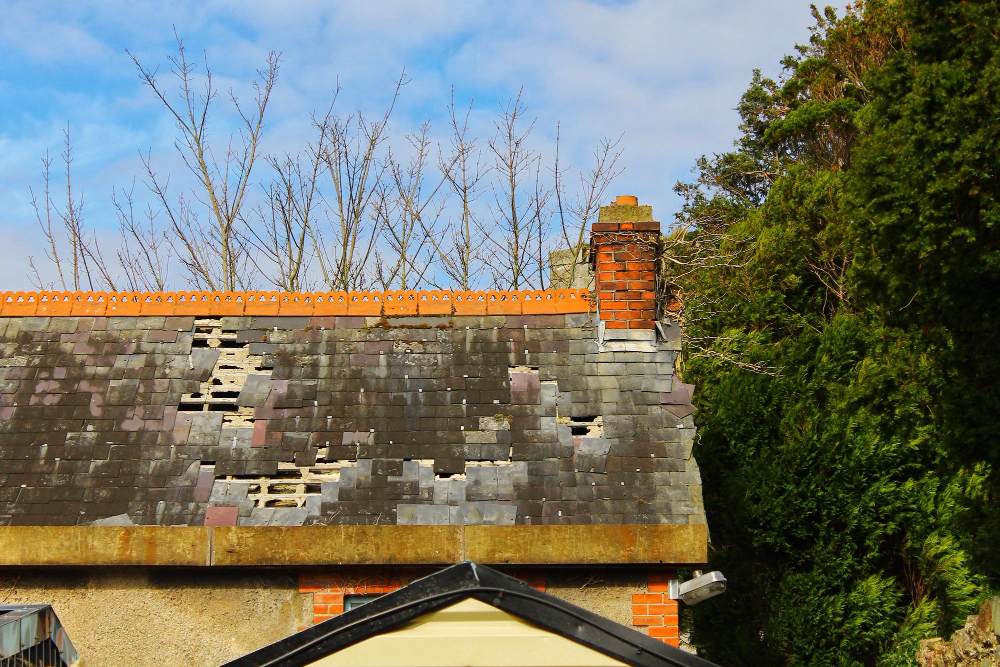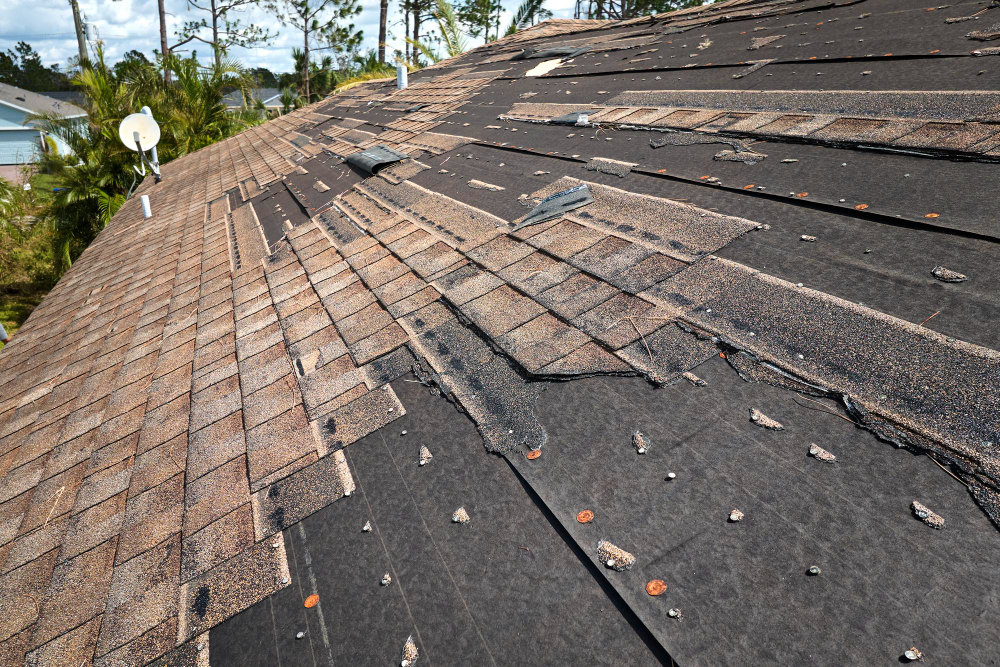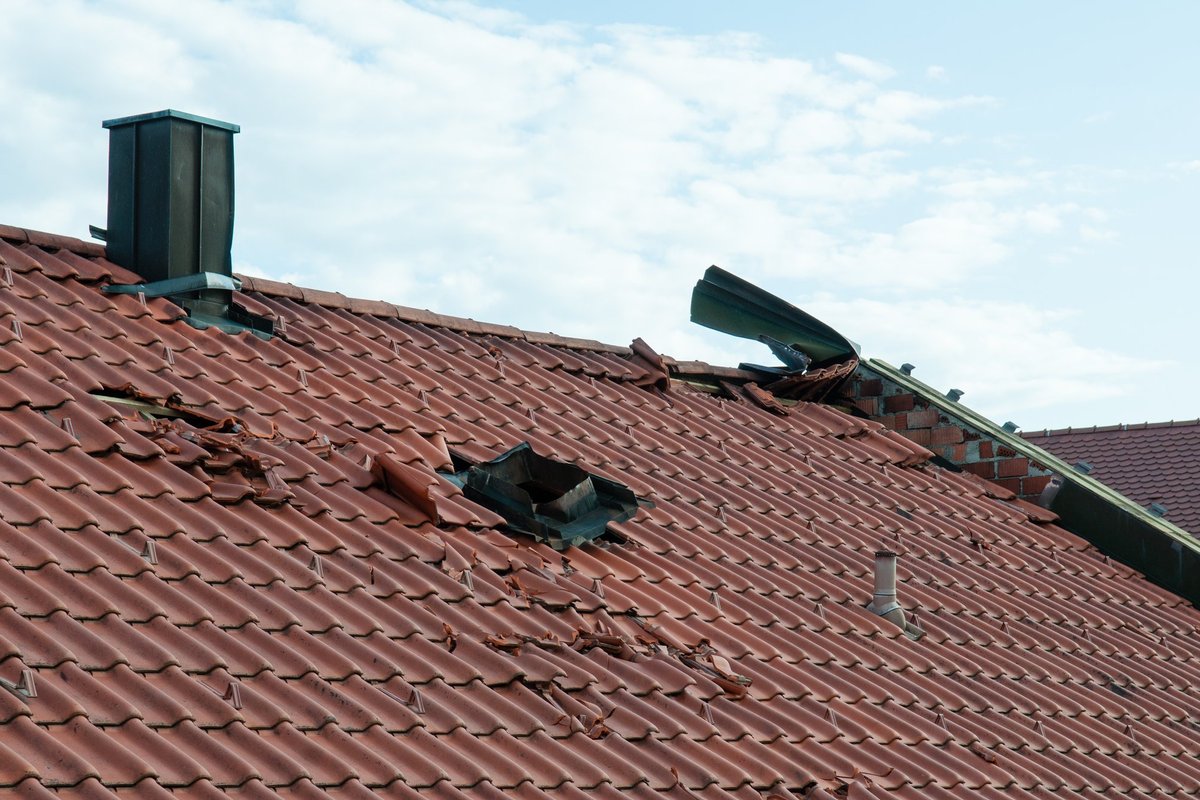A powerful storm can compromise your roof in ways that aren’t always obvious from the ground. Heavy winds, driving rain, hail, and falling branches can weaken your roof’s protective layers, making it easier for water to seep inside and cause expensive repairs later.
Taking prompt action is key, the faster you detect and repair storm damage, the better you can safeguard your home’s structure and prevent long-term problems.
In this guide, we’ll cover:
- The most common types of roof damage caused by storms
- Both visible and hidden warning signs
- A safe, step-by-step inspection process
- When it’s time to bring in a professional roofer
Types of Roof Damage After a Storm
1. Wind Damage
Strong winds can lift, bend, or tear shingles completely off the roof. On metal systems, wind may loosen fasteners or seams.
2. Hail Damage
Hailstones can leave dents in metal roofing, crack shingles, or break tiles. Even small surface damage can weaken water resistance.
3. Water-Related Damage
Prolonged or heavy rainfall can seep through worn areas, cracked flashing, or existing vulnerabilities, leading to leaks and rot.
4. Impact Damage from Debris
Branches and other airborne objects can puncture roofing materials, damage flashing, or clog gutters.
5. Snow and Ice Issues
In cold-weather areas, storms can create ice dams, blocking runoff and forcing water under shingles.
Safety Guidelines Before You Inspect
- Wait for weather conditions to fully clear.
- Avoid walking on wet or visibly damaged roofing.
- Wear slip-resistant shoes and protective gloves.
- Use binoculars for a ground-based inspection whenever possible.
- Have another person present if you need to use a ladder.

Signs of Roof Damage You Can See from the Ground
- Missing or broken shingles lying around your yard
- Shingles that are curled, cracked, or creased
- Loose or bent flashing around skylights, vents, or chimneys
- Debris build-up in valleys or along the roofline
- Noticeable sagging in certain sections of the roof
Indoor Clues of Storm-Related Roof Problems
- Brown or yellow water stains on ceilings or walls
- Damp insulation or pooling water in the attic
- Musty or moldy smells indicating moisture problems
- Shafts of light coming through the roof deck
How to Spot Roof Damage After a Storm – Step by Step
Step 1: Put Safety First
- Only inspect once the weather has stabilized.
- Avoid working in lightning, strong winds, or rain.
- Wear sturdy shoes, gloves, and safety goggles.
- Do not climb onto the roof without proper tools and experience.
Step 2: Ground-Level Check
- Walk around the entire home to see the roof from all angles.
- Use binoculars to check for:
- Missing, cracked, or curled shingles
- Damaged flashing near chimneys and vents
- Piles of debris marking possible impact points
- Areas that appear to sag
Step 3: Inspect Gutters and Downspouts
- Look for sections that are bent, loose, or detached.
- Check for hail dents or other impact damage.
- Watch for excess shingle granules, which point to wear.
Step 4: Check the Attic
- Use a bright flashlight to spot:
- Dark water stains on rafters, insulation, or decking
- Wet or flattened insulation
- Light shining through the roof in spots
- Musty smells indicating mold
Step 5: Closer Roof Inspection (If Safe)
If you have the skills and safety equipment:
- Position a stable ladder at a proper angle.
- Inspect:
- Ridge caps for lifting or cracks
- Shingle edges for wind damage
- Metal surfaces for dents, rust, or loose screws
- Flashing for broken seals
- Skylights, vents, and chimneys for gaps or cracks
Step 6: Check for Less Obvious Issues
- Examine soffits, fascia boards, and overhangs for cracks or stains.
- Look at vent pipes to ensure rubber boots are in place.

Step 7: Record Your Findings
- Take clear, high-resolution photos from various angles.
- Include both close-up and wider shots for context.
- Keep written notes of the date, storm details, and the damage observed.
Step 8: Call a Professional Roofer
- A licensed roofing contractor can detect hidden or structural issues you might miss.
- They can provide an official report to support insurance claims.
How to Reduce Future Storm Damage?
- Have your roof inspected professionally twice a year and after major storms.
- Keep gutters clean to allow proper water flow.
- Trim back overhanging tree branches that could fall during high winds.
- Upgrade to impact-resistant roofing if you live in an area prone to severe weather.
Conclusion
Catching roof damage early after a storm can save you thousands in repairs. By following a safe and thorough inspection process, and calling in a roofing professional when needed you can protect your home, your investment, and your peace of mind.


